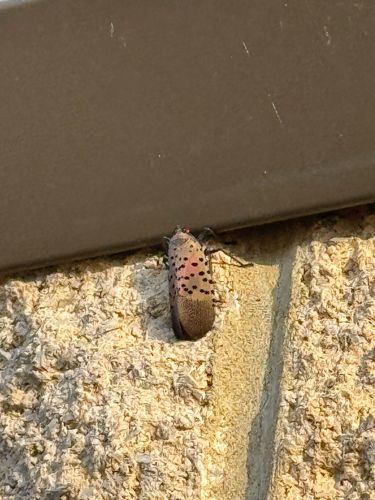Spotted Lanternfly
Scientific Name: Lycorma delicatula
Order & Family: Hemiptera (Order), Fulgoridae (Family)
Size: Adults: approximately 1 inch (2.5 cm) in length and 0.5 inch (1.27 cm) in width, with a wingspan of about 1.5 to 2 inches (3.8 to 5 cm).

Natural Habitat
Originally from Asia, it has become an invasive species in North America. They thrive in agricultural areas, vineyards, orchards, forests, and residential areas, especially where their preferred host plants like Tree of Heaven are present.
Diet & Feeding
Plant sap, particularly from Tree of Heaven, fruit trees (apple, peach, cherry, grape), hops, and various other woody and herbaceous plants.
Behavior Patterns
Nymphs and adults feed on the sap of plants. Adults are strong jumpers and can fly short distances. They lay eggs in masses covered with a mud-like protective coating, usually on smooth surfaces like trees, rocks, or outdoor furniture. They aggregate in large numbers.
Risks & Benefits
Potential Risks: Significant invasive agricultural and forest pest, causing widespread damage to crops (especially grapes and fruit trees) and ornamental plants by feeding on sap, leading to stunted growth, reduced yields, and plant death. They excrete sticky 'honeydew' that promotes the growth of sooty mold, which covers plants, reduces photosynthesis, and can attract other pests like ants and wasps. Potential Benefits: No known direct benefits; they are considered a serious threat to ecosystems and agriculture where they are invasive.
Identified on: 8/10/2025